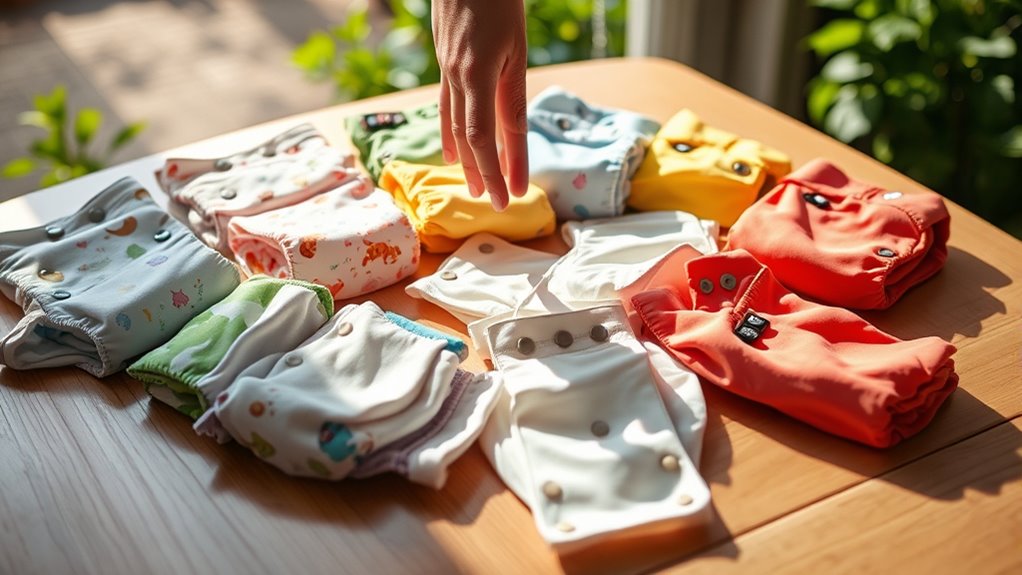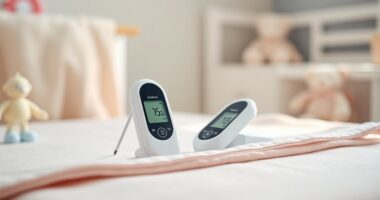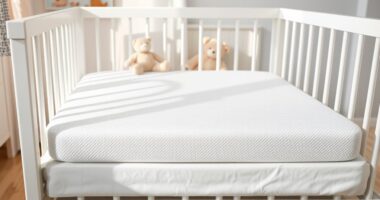Cloth diapers are worth trying because they cut down on landfill waste and save you money in the long run. They’re made from natural materials, reducing the chances of diaper rash and irritations for your baby. Plus, cloth diapers can make potty training easier by helping your child feel wetness. With trendy styles and user-friendly designs, you won’t sacrifice fashion for function. Discover more reasons why cloth diapers could be your best parenting choice.
Key Takeaways
- Cloth diapers significantly reduce landfill waste and contribute to a lower carbon footprint, making them an environmentally friendly choice.
- They offer long-term cost savings, potentially saving thousands compared to disposable diapers, especially with multiple children.
- Made from natural materials like cotton and bamboo, cloth diapers help reduce skin irritations and promote a healthier environment for babies.
- Cloth diapers enhance sensory awareness, aiding in quicker potty training transitions and further cost savings.
- Modern cloth diapers come in stylish designs and are user-friendly, combining practicality with fashion for today’s parents.

Cloth diapers are becoming an increasingly popular choice for many parents looking to reduce their environmental footprint while saving money. As you consider your options, it’s worth noting that cloth diapers significantly cut down on landfill waste. Disposable diapers can take up to 500 years to decompose, filling your local landfills with toxic materials and contributing to pollution. By choosing cloth, you’re making a sustainable decision that not only benefits the planet but also helps you cut your carbon footprint. Additionally, disposable diapers represent 2% to 4% of solid waste in landfills, highlighting the massive impact of your choice.
The manufacturing process for cloth diapers typically requires less energy and resources than that for disposables, which is another plus.
While cloth diapers might come with a higher initial investment, they can save you thousands over time, especially if you plan on having more than one child. You can reuse them multiple times, reducing your ongoing expenses. Plus, many families find that they can resell gently used cloth diapers for a decent price, further offsetting costs. Brands like Wegreeco even offer budget-friendly options, making it easier for you to switch to cloth without breaking the bank.
Cloth diapers may require an upfront investment, but they can save you thousands in the long run, especially with multiple children.
Health-wise, cloth diapers have distinct advantages too. Many parents notice that disposable diapers can irritate their baby’s sensitive skin due to the toxic chemicals and plastics they contain. In contrast, cloth diapers are made from natural materials like cotton and bamboo, which are gentler and breathable. This can help reduce diaper rash and minimize exposure to harmful substances, creating a healthier environment for your baby.
You might also find that cloth diapers can aid in potty training. They allow your child to feel wetness, which can enhance sensory awareness and help them recognize the need to use the toilet. Many parents report that children using cloth diapers transition out of diapers sooner than those in disposables, making potty training a smoother process.
Finally, today’s cloth diapers come in a variety of styles, colors, and patterns, allowing you to customize your baby’s look. Modern designs are user-friendly and fashionable, so you don’t have to sacrifice style for practicality.
With convenient options available, managing laundry becomes easier, and odor-controlling diaper pails can help keep your home fresh. Overall, cloth diapers present a practical, cost-effective, and eco-friendly choice for parents looking to make a positive impact.
Frequently Asked Questions
Are Cloth Diapers More Economical Than Disposable Options?
Yes, cloth diapers are more economical than disposable options in the long run.
While you might face a higher upfront cost, you can save significantly over time—up to $2,000 per child.
If you reuse them for multiple kids, those savings multiply.
Plus, you won’t need to constantly buy disposables, which adds to your expenses.
How Do You Properly Clean and Care for Cloth Diapers?
To properly clean and care for cloth diapers, start by removing solid waste using a sprayer or rinsing under cold water.
Pre-rinse before the main wash with warm water and a cloth diaper-friendly detergent.
Wash every 2-3 days using the longest cycle and an extra rinse to eliminate detergent residue.
Air dry or tumble dry on low for best results.
Regular maintenance keeps your diapers fresh, absorbent, and ready for use.
Can Cloth Diapers Cause Diaper Rash?
Did you know that studies suggest cloth diapers don’t significantly reduce diaper rash frequency compared to disposables?
Yes, cloth diapers can cause diaper rash, mainly due to moisture retention, irritants from urine and feces, and chafing from poor fit.
To prevent this, change your baby’s diaper frequently, use breathable materials, and apply cloth-safe barrier creams.
Keeping the skin clean and dry is essential in managing and preventing rashes effectively.
What Types of Cloth Diapers Are Available?
There are several types of cloth diapers available to suit your needs.
You’ve got All-in-One (AIO) diapers that function like disposables, All-in-Two (AI2) systems with interchangeable inserts, and fitted diapers that require a cover.
Pocket diapers let you customize absorbency, while prefold diapers are versatile and economical.
Each type has its unique features, so consider your lifestyle and preferences when choosing the best option for you and your baby.
How Many Cloth Diapers Do I Need to Start?
When it comes to cloth diapers, you’ll want to start off on the right foot.
For newborns, having about 24-36 diapers is ideal, while infants usually need around 20-24, and toddlers can get by with 14-24.
If you’re washing every two to three days, that stash should serve you well.
Don’t forget to keep a few extras for emergencies; it’s better to be safe than sorry!
Conclusion
In a world buzzing with disposable options, switching to cloth diapers feels like stepping back into a simpler time, where sustainability reigns. You’ll not only save money but also reduce waste, contributing to a healthier planet for future generations. Embracing cloth diapers is like trading a fast-paced city life for a cozy, eco-friendly cottage. So why not give them a try? You’ll find they’re convenient, adorable, and a smart choice for both your baby and the environment.








